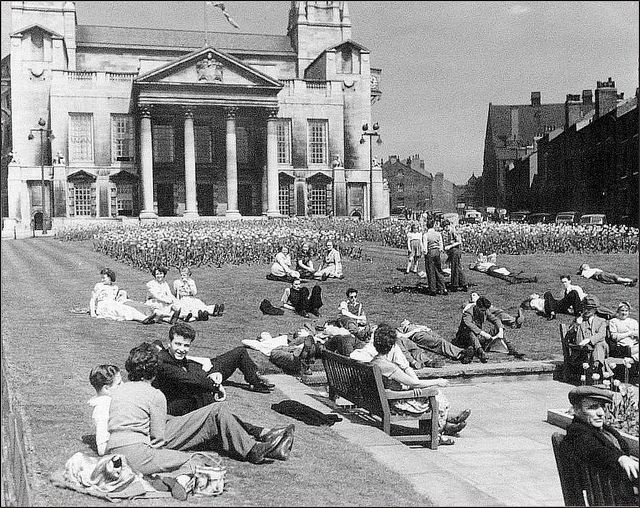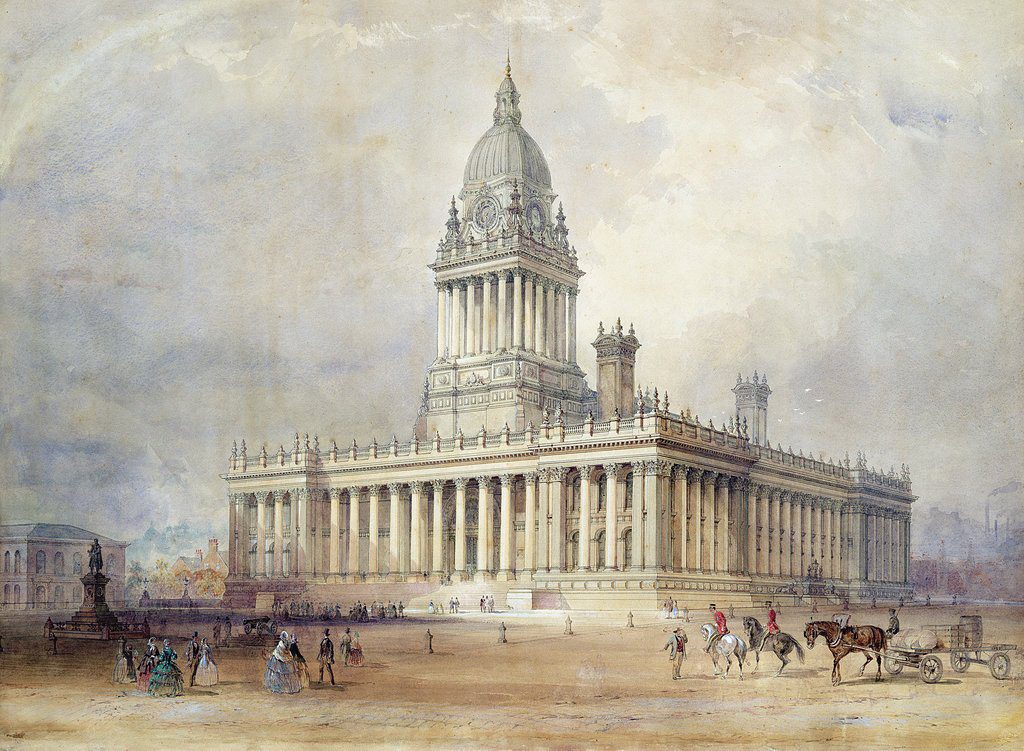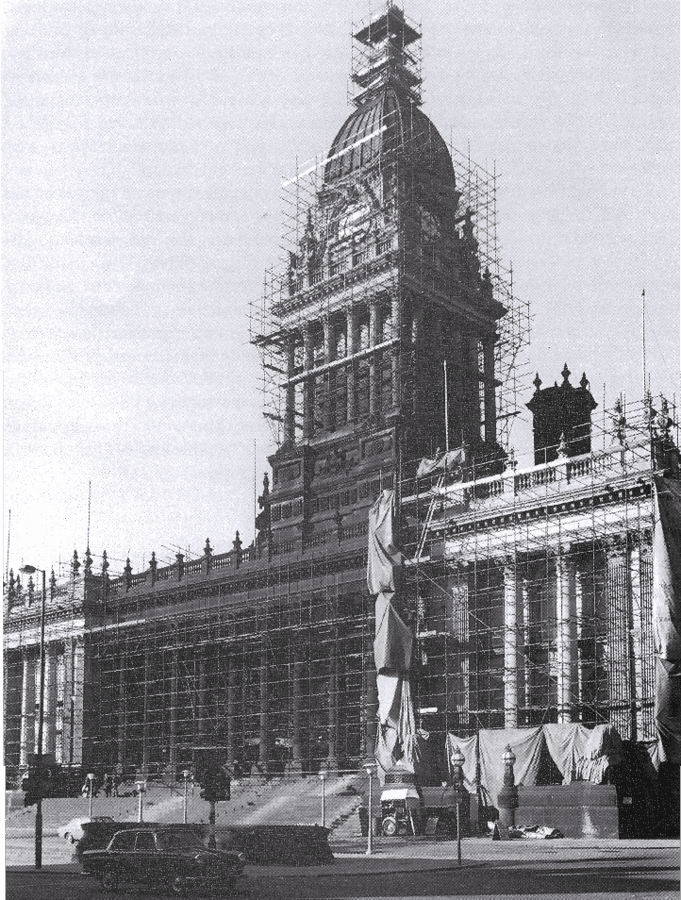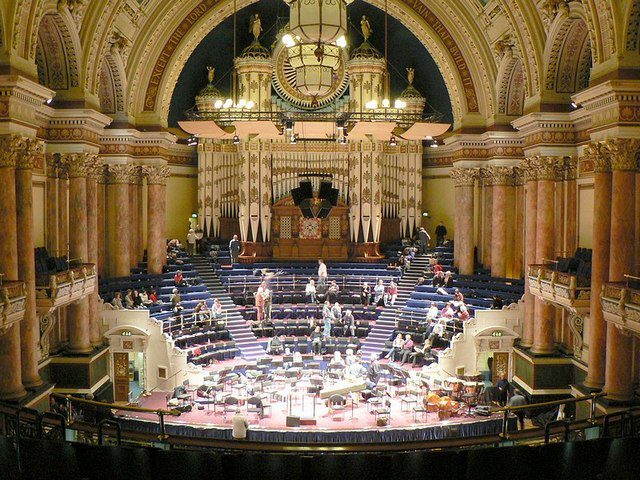Leeds, which is located in West Yorkshire, stands out among other cities thanks to its rich history and abundance of architectural monuments. The famous Leeds Town Hall is one of the most famous architectural wonders of the city. This majestic structure is proudly located in the centre of the city, reminding every passer-by that it is the true pride of the residents. The grandiose building will be an eternal symbol of the economic growth and high cultural prosperity of Leeds. Learn more at leeds-future.
The mid-19th century in Great Britain was characterised by rapid industrial, social and cultural development. At that time, the infrastructure of territorial centres was actively developing. Magnificent buildings began to appear all over the country, reflecting the special atmosphere and mood of each settlement. The lively city of Leeds was no exception. The local government had a plan to build a grand structure that would demonstrate a new level of city development.
The project of the future Leeds Town Hall was created by Cuthbert Brodrick. At that time, he was a little-known young architect from Kingston upon Hull. The talented architect shrewdly felt the special atmosphere of the city and masterfully recreated it in a magnificent building. Elegance, sophistication and majestic power are the words used by locals and tourists to describe Cuthbert Brodrick’s architectural wonder.
In this article, you will find out more information about the construction of the beautiful heritage of the city, Leeds Town Hall.

The first steps of local authorities in the Leeds Town Hall planning
The first half of the 19th century was marked by a rapid development that affected all spheres of life in Leeds. However, the city lacked a special highlight that would distinguish it from all others. In the summer of 1850, the city administration held public discussions to approve the main symbol of Leeds and agreed to build a large public hall.
In 1851, the decision to build a town hall was approved by voting. This architectural structure was to become the main symbol of the city, which would reflect its prosperity and greatness. The site under construction was purchased for £39,500. However, there were some officials who opposed the idea. Victorian politicians didn’t realise the value and importance of such an architectural structure. Nevertheless, they were in the minority and any proposals to limit expenses on town hall were rejected by a majority. Public activists and the majority of the local population enthusiastically supported the project, accelerating the planning and construction of the town hall.

Competition for the most talented architects
In 1852, Leeds local council organised an open competition among architects for the best project of the future city gem. The main requirement was to create a new type of building that hadn’t existed in the whole country yet. It was also important to make the building functional, successfully combining various premises, such as courtrooms, a council chamber, a public hall, a complex of ceremonial entertainment rooms and municipal institutions. In addition, there were no specific stylistic restrictions, thus, the architects were free to choose the style of the future architectural wonder according to their own preferences.
Only sixteen anonymous applications were submitted to the contest. Such a small number of contestants was due to a small reward. The winner was Cuthbert Brodrick, a 29-year-old architect who was almost unknown outside his hometown, Kingston upon Hull. A little later, the talented architect designed other famous Leeds landmarks, such as the Mechanics’ Institute, the Corn Exchange and the Cookridge Street Public Baths.
Brodrick’s style boldly stood out among the other contestants. He used elements of the Roman style, while others preferred French architecture. From the very beginning, the project organisers hesitated whether the young architect would cope with the task and even revised the contract, indicating the final remuneration of £39,000.

Problems during the Town Hall construction
In the summer of 1853, the organisational committee entered into a construction contract with local builder Samuel Atack. According to the contract, the construction cost £41,835 and the deadline was January 1, 1856. In August 1853, the Mayor of the city, John Hope Shaw, laid the first stone in the foundation to the lively applause of the townspeople. It is important to note that the building is mostly built of local Yorkshire stone.
Subsequently, after the start of construction, the administration faced various problems. The first of them was the tight deadlines that the organisers had to meet because Queen Victoria agreed to open the majestic building. Another challenge was the lack of workers, due to the involvement of human resources in the Crimean War, which began in 1853. This slowed down construction and Samuel Atack’s team went bankrupt. The local authority was forced to look for another building company, allocating new funds to create Leeds’ greatest landmark.
During construction, the architect and his team changed the design several times because they wanted to add more beauty to the building, while the local council wanted the future town hall to be more practical. For example, the council didn’t agree with the architect’s idea to include the tower in the initial project. Therefore, they decided to place it on the special roof construction later. The construction of the tower was officially approved in March 1856.

Queen Victoria and Prince Albert officially opened Leeds Town Hall
The city was pompously preparing for the most significant event. The residents decorated the streets and hung flags and banners. Tourists gathered from all over the world to witness a historic event in the life of the British Empire. This is how the local press described the opening of the local town hall. On September 6, 1858, Her Majesty Queen Victoria, accompanied by Prince Albert, arrived in Leeds for the grand opening of the city’s most significant building. Hundreds of thousands of people joyfully greeted the Queen at Leeds railway station. Leeds Town Hall was ceremonially opened by Queen Victoria and Prince Albert. In addition, the Queen knighted the Mayor of the city, Peter Fairbairn.
The celebration continued in the city centre. There, people could see exhibitions of local manufacturers and a grand music festival.
A multi-million-pound modern reconstruction of the Town Hall
During the Second World War, Leeds was heavily bombed and the eastern part of the Town Hall was damaged. It was completely repaired soon.
In 1951, the Town Hall became a Grade I listed building, which protected it from demolition or unauthorised modification.
In 2019, Leeds City Council allocated funds for a large-scale reconstruction of the building. This much-anticipated project aims to transform the city’s best-known and best-loved building and make it even more impressive. The reconstruction is planned to be completed in 2025.
The project includes restoration of the decorations in the Victoria Hall, improvements of the public spaces as well as the creation of new cafes, bars, bathrooms, the reception desk and the box office on the first floor, which can be reached by a new customer lift. The city continues to repair the clock tower, improve the roof and replace the tiles with Welsh slate.
Leeds Town Hall clearly reflects Yorkshire ingenuity. It became a model for other buildings throughout the British Empire, as it was one of the first and largest of its kind. It is a key part of Leeds’ heritage and a legendary example of English architecture that was preserved to modern times.